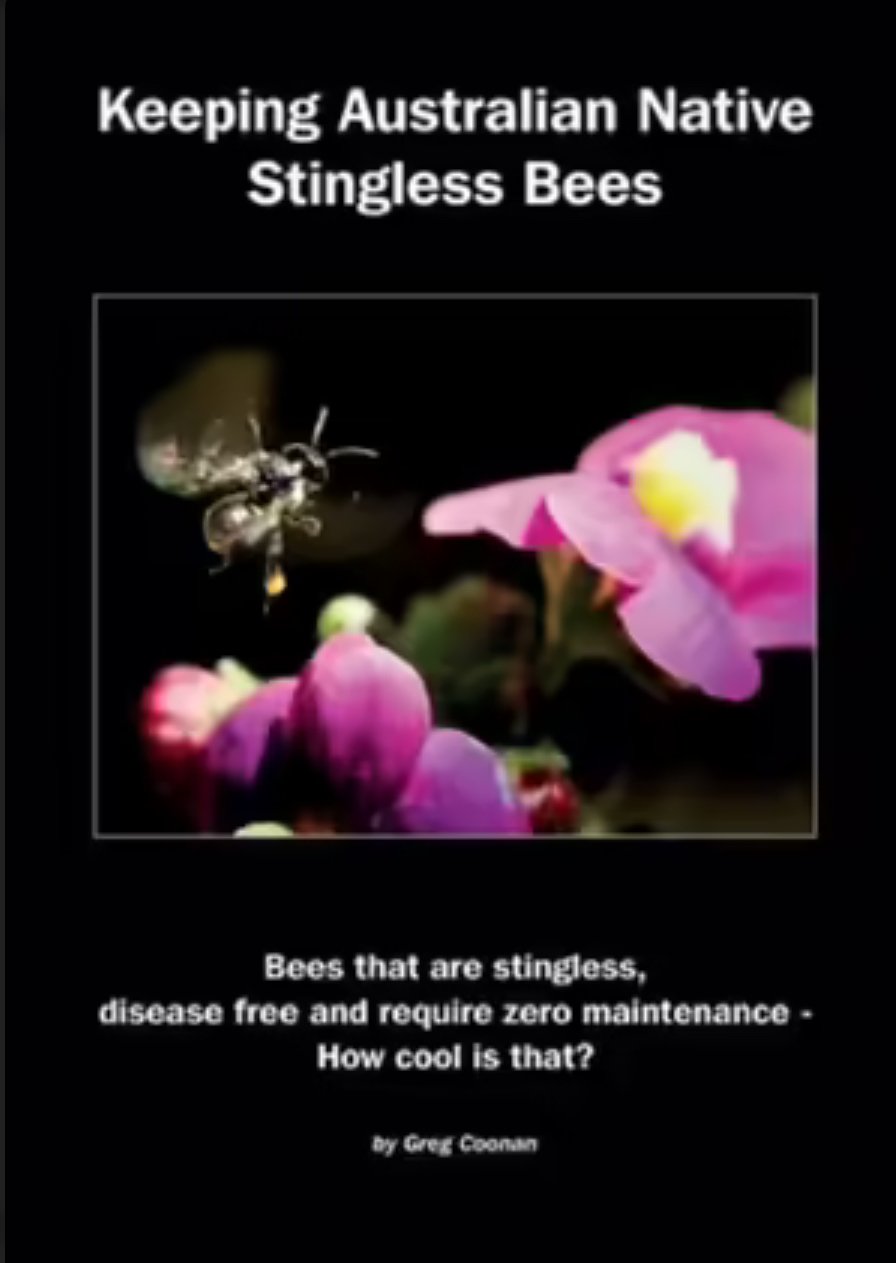 Image 1 of
Image 1 of


Keeping Australian Stingless Bees
Native stingless bees are one of nature's most wonderful gifts. Our passion is native beekeeping, and we enjoy making it easy for others to gain the knowledge and confidence to look after and be enriched by these fabulous little creatures. This is the sole purpose for preparing this guide.
Based on my own years of experience and those of my friends I have prepared this simple guide for first time hive owners, and for those who want to progress into native beekeeping.
Our methods are based around those so rigorously researched, tested and wonderfully presented by Tim Heard in his book 'The Australian Native Bee Book'. This easy to read book contains a wealth of knowledge, and should be studied by anyone wishing to progress from owning a hive to native beekeeping, undertaking such practices as honey harvesting and hive propagation. The more you read and understand about the biology of native bees and in particular native stingless bees, the better prepared you will be to become a native beekeeper. As with any profession or trade, once you become proficient, you make small adjustments to the practices and procedures to what works consistently well for you, while maintaining the core principles - it can be the same for native beekeeping.
This guide sets out what works consistently well for us, and for which advice is constantly given to hundreds of now successful hive owners. It is divided into two parts. The first part sets out what you need to know to become a hive owner of Tetragonula carbonaria, Tetragonula hockingsi and Austroplebeia australis. The second part deals with more advanced native beekeeping practices for Tetragonula carbonaria and Tetragonula hockingsi.
Native stingless bees are one of nature's most wonderful gifts. Our passion is native beekeeping, and we enjoy making it easy for others to gain the knowledge and confidence to look after and be enriched by these fabulous little creatures. This is the sole purpose for preparing this guide.
Based on my own years of experience and those of my friends I have prepared this simple guide for first time hive owners, and for those who want to progress into native beekeeping.
Our methods are based around those so rigorously researched, tested and wonderfully presented by Tim Heard in his book 'The Australian Native Bee Book'. This easy to read book contains a wealth of knowledge, and should be studied by anyone wishing to progress from owning a hive to native beekeeping, undertaking such practices as honey harvesting and hive propagation. The more you read and understand about the biology of native bees and in particular native stingless bees, the better prepared you will be to become a native beekeeper. As with any profession or trade, once you become proficient, you make small adjustments to the practices and procedures to what works consistently well for you, while maintaining the core principles - it can be the same for native beekeeping.
This guide sets out what works consistently well for us, and for which advice is constantly given to hundreds of now successful hive owners. It is divided into two parts. The first part sets out what you need to know to become a hive owner of Tetragonula carbonaria, Tetragonula hockingsi and Austroplebeia australis. The second part deals with more advanced native beekeeping practices for Tetragonula carbonaria and Tetragonula hockingsi.
Native stingless bees are one of nature's most wonderful gifts. Our passion is native beekeeping, and we enjoy making it easy for others to gain the knowledge and confidence to look after and be enriched by these fabulous little creatures. This is the sole purpose for preparing this guide.
Based on my own years of experience and those of my friends I have prepared this simple guide for first time hive owners, and for those who want to progress into native beekeeping.
Our methods are based around those so rigorously researched, tested and wonderfully presented by Tim Heard in his book 'The Australian Native Bee Book'. This easy to read book contains a wealth of knowledge, and should be studied by anyone wishing to progress from owning a hive to native beekeeping, undertaking such practices as honey harvesting and hive propagation. The more you read and understand about the biology of native bees and in particular native stingless bees, the better prepared you will be to become a native beekeeper. As with any profession or trade, once you become proficient, you make small adjustments to the practices and procedures to what works consistently well for you, while maintaining the core principles - it can be the same for native beekeeping.
This guide sets out what works consistently well for us, and for which advice is constantly given to hundreds of now successful hive owners. It is divided into two parts. The first part sets out what you need to know to become a hive owner of Tetragonula carbonaria, Tetragonula hockingsi and Austroplebeia australis. The second part deals with more advanced native beekeeping practices for Tetragonula carbonaria and Tetragonula hockingsi.